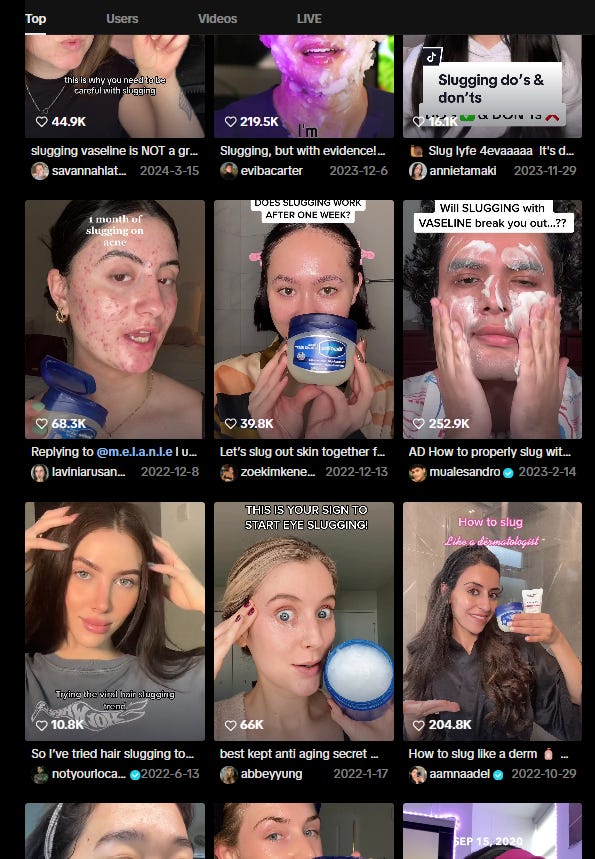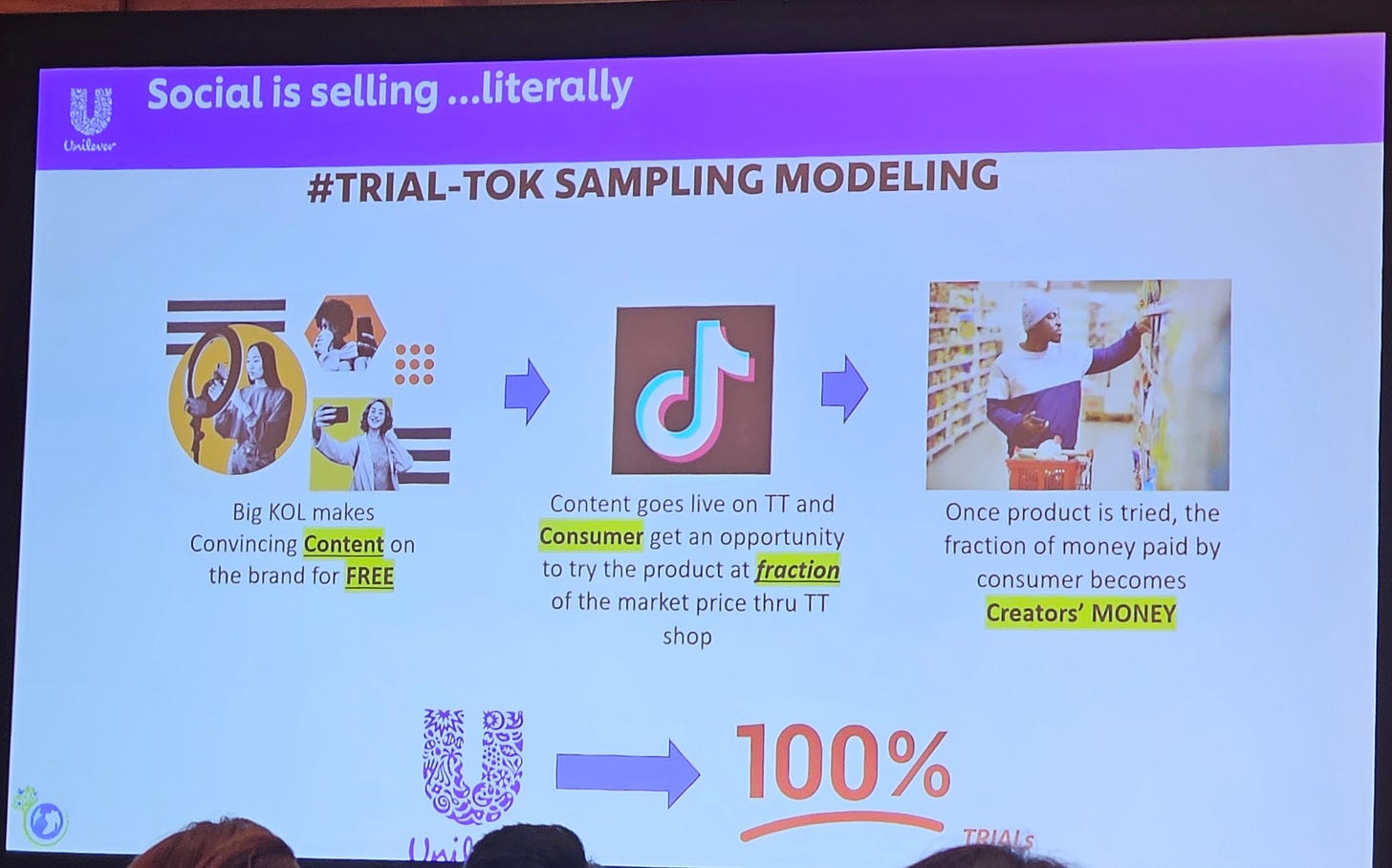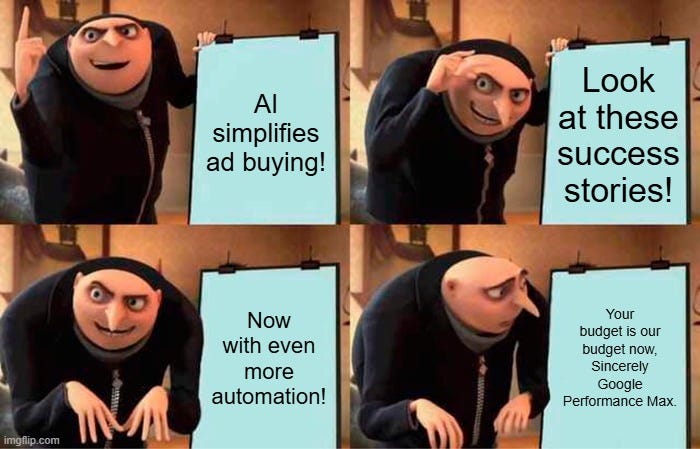Marketing Dojo #101: Unilever 🤝 Influencers = New BFFs💅💰
Unilever goes all-in on influencers, Adalytics' shocking CSAM report, AI-media buying.
Never underestimate momentum.
Last week, I took a short break to celebrate hitting 100 issues of Marketing Dojo. And sure enough, it's taking me twice as long to write this one.
Rightfully, momentum figures in my top three reflections on writing this newsletter over two years. You'll find them in the P.S. section if you're curious.
But inertia or no inertia, marketing and tide wait for none. Here's what we're diving into this week:
One of the biggest advertisers is about to double down on influencer marketing
AI is on track to dominate media buying
A must-read: Adalytics' CSAM report
And lots more.
If you haven't yet subscribed, liked, or commented, here’s your cue to be generous with digital appreciation. Those small actions don't just feed the algorithms; they feed this writer's motivation to deliver valuable insights straight to your inbox weekly.
Unilever Hands the Mic to Influencers—And the Cash.
Don't be surprised if you start seeing a flood of Vaseline, Knorr, or Axe recommendations on TikTok or Instagram.
Unilever's new CEO, Fernando Fernandez, is going all in on influencer-led marketing.

Here's what I gathered from his latest interview making the rounds:
Massive Scale-Up: Unilever plans to work with 20 times more influencers across its brand portfolio and increase social media spending from 30% to 50% of its total advertising budget.
Hyper-Local Domination: The company aims to have at least one influencer in India's 19,000 zip codes and Brazil's 5,764 municipalities. Some areas will have up to 100 influencers, ensuring messaging that resonates with specific cultural and geographical contexts.
Multi-Tiered Influence: They'll engage everyone from TikTok creators to celebrities, tapping into the unique audiences each tier delivers.
Now for some context that makes this truly mind-blowing: Unilever spends about $10.5 billion annually on marketing — that's 15% of its revenue and more than the combined marketing budgets of PepsiCo, General Mills, Kenvue (J&J), and Kellogg's!

This is also a massive shift for a consumer brand. For a consumer packaged goods company like Unilever, brand control is paramount. Brand is almost spoken, discussed, and described as a living being.
Doubling down on influencer marketing means surrendering that control. The best influencer campaigns provide guidelines rather than rigid rules, allowing content that aligns with each creator's authentic style.
Unilever's investment will also bring in massive shifts in influencer marketing.
At a recent event, Unilever's digital brand head shared a new TikTok sampling model they're testing with micro-influencers:
➡️ Instead of paying influencers a flat fee, Unilever gives them free product samples.
➡️ Influencers sell these samples via TikTok Shop at a price they choose.
➡️ They keep 100% of the proceeds.
Traditional sampling programs are costly, but this model turns influencers into stakeholders with skin in the game—a win-win for both sides.
With Unilever now flooding the influencer market with serious cash, expect to see more innovative brand-creator partnerships emerging throughout the year.
Influencer marketing has certainly gotten off to a fantastic start in 2025!
Digital Advertising's Darkest Hour.
If there's one thing that you must read this week (warning: some parts are disconcerting and not safe for work), it's the Adalytics report on ads appearing next to child sexual abuse material (CSAM).
Here's the disturbing TL;DR:
Ads from major brands—including the U.S. Department of Homeland Security, Starbucks, PepsiCo, Honda, and Audible—were unknowingly placed on websites hosting CSAM.
This happened despite using brand safety tools like DoubleVerify and Integral Ad Science.
Ads were served by Amazon, Google, Criteo, and Microsoft—with Google and Amazon under particular scrutiny due to their dominance in ad tech and lack of transparency.
The discovery was made using a bot from URLScan.io, which scans the web for malicious sites and logs which ads appear on them.
The bot found ads on image-sharing sites like imgbb.com and ibb.co, platforms previously flagged for hosting CSAM.
The findings prompted U.S. senators to demand answers from these ad tech companies, expressing concerns about the failure of brand safety measures and the potential legal liabilities for facilitating CSAM.
But the industry response has ranged from performative action to deafening silence:
Amazon has been the swiftest, offering the most detailed response. They've announced plans to enhance URL transparency and reporting, refunded all affected advertisers, and blocked these websites from their ad systems.
DoubleVerify went with the "sorry, not sorry" approach, addressing the issue while primarily focusing on the "fantastic job" its platform did by preventing "tens of thousands" of ads from appearing on the site over the past 30 days.
Google: Pin-drop silence. No acknowledgement. No promise of transparency.
For advertisers, there is no transparency in where a digital ad gets placed.
They trust platforms like Google's DV360, Amazon, and Microsoft to follow brand safety guidelines. They rely on DoubleVerify and Criteo as added protection.
But when Adalytics, chanced upon this website and went down the rabbit hole, it unearthed how lack of transparency in the digital media landscape makes a joke out of brand safety.
Thinking about creating short-form videos?
I’ve been writing on LinkedIn for years. But last year, I decided to experiment with video.
The only problem? Editing took forever. I didn’t have the same finesse as I did with writing.
That’s where my younger sibling, Shubham, came in—helping me get started, polishing my videos, and adding those eye-catching overlays that make storytelling pop.
Now, he’s looking to take on more clients. Contact him here if you’re considering creating videos but don’t want to spend hours editing.
AI-Fuelled Platforms Are Taking The Wheels and Locking The Doors.
TikTok's Smart+, Google's Performance Max, and Meta's Advantage+ are platforms aggressively promoting their AI-powered ad products.
The pitch is straightforward: Advertisers just need to set a budget, define sales goals, and provide a few inputs. The AI takes over, crunching massive datasets to optimize performance in real-time.
Each platform continues to expand these AI tools. Earlier this year, Google added search capabilities to its Performance Max suite.
The platforms are frantically publishing case studies with bold claims. A recent Think with Google article boasted that Performance Max advertisers have seen an average 13% increase in total incremental conversions at a similar cost per action.
However, this inevitable push towards AI comes at a significant cost for advertisers and agency partners.
Google and Meta combined account for more than half of the total global digital advertising budget.
📉 Loss of Control for Brands
Google and Meta together control over half of the world's digital ad spend. AI-driven media buying means brands lose transparency and decision-making power. Marketers must trust that these platforms will act in their best interest—even when algorithms ultimately serve the platform's revenue, not the advertiser's goals.
🏢 A Threat to Traditional Media Agencies
AI automation reduces the need for human media buyers, hitting agencies that rely on manual optimization and strategy. As more budgets shift to automated bidding, the role of media buying agencies shrinks—possibly to the point of irrelevance.
For brands, this dependence is irreversible. Once most budgets shift to automated media selection, partners are eliminated, and media buying within companies becomes an afterthought - these platforms will hardly be a choice anymore.
As one of Meta's spokespersons revealed in their latest earnings report, Meta has received "overwhelmingly positive feedback" about Advantage+ and is testing a new campaign setup that will turn AI tools on by default for specific campaigns to "simplify the process for buyers."
Translation: We're taking away your choices, but don't worry - it's for your own good.
Short Stuff:
X competitor BlueSky is considering giving its users control on their data usage for AI training (Doing the honorable thing).
TikTok announces a slew of features aimed at making the app more wholesome for teenagers (Pleasing the parents).
Google expands its AI overviews (Expect further reductions in traffic).
That’s a wrap on this week. Thank you for your time and attention. If you liked this week’s newsletter or found something interesting, please give me a like ❤️ or drop a comment🗨️. Your support helps drive the newsletter's discoverability.
I will see you in your inbox in a couple of weeks.
Regards,
P.S: 3 Hard-Earned Lessons From Publishing My 100th Newsletter.
Two years of publishing every Wednesday (ok I took some breaks along the way). As I reflect on this journey, here are the 3 lessons I learnt.
1️⃣ 𝐖𝐫𝐢𝐭𝐢𝐧𝐠 𝐰𝐞𝐥𝐥 = 𝐓𝐡𝐢𝐧𝐤𝐢𝐧𝐠 𝐜𝐥𝐞𝐚𝐫𝐥𝐲.
"Thinking is horizontal, writing is vertical," David Perell quipped in his penultimate cohort of Write of Passage.
Writing forces clarity. For every issue, I had to dig deeper, form connections and develop a well-articulated point of view.
2️⃣ 𝐀𝐜𝐭𝐢𝐨𝐧 𝐩𝐫𝐞𝐜𝐞𝐝𝐞𝐬 𝐦𝐨𝐭𝐢𝐯𝐚𝐭𝐢𝐨𝐧.
For years, I wanted to write but was "too busy."
The commitment to write weekly became my forcing function to take action. Along the way, I discovered that consistent action creates motivation. Not the other way around.
3️⃣ 𝐌𝐨𝐦𝐞𝐧𝐭𝐮𝐦 𝐢𝐬 𝐞𝐯𝐞𝐫𝐲𝐭𝐡𝐢𝐧𝐠.
1200+ words a week meant writing daily, weekends included. Like fitness, the best way to be a writer is to remain a writer. During breaks for travel or health, I discovered a simple truth: the longer the pause, the harder the restart.
If you are looking for someone who can help you with short-form video editing, Have a look at this fantastic portfolio.









